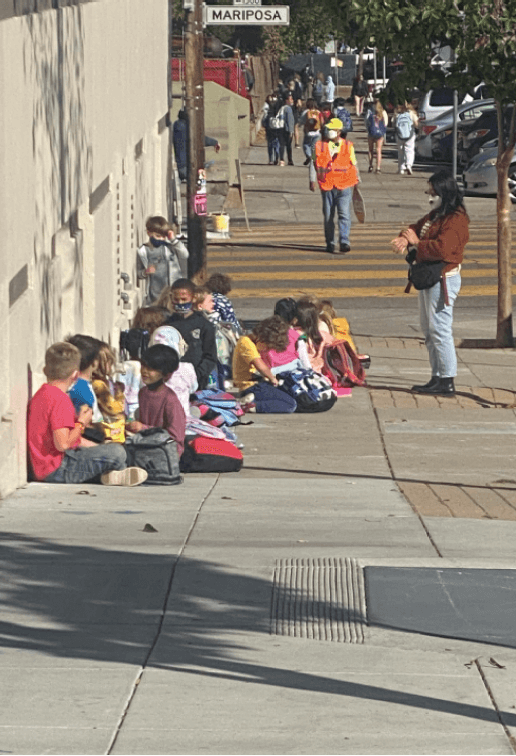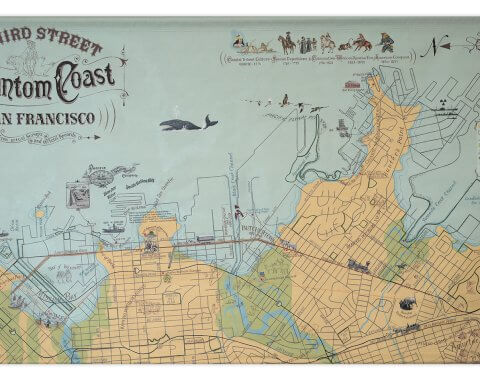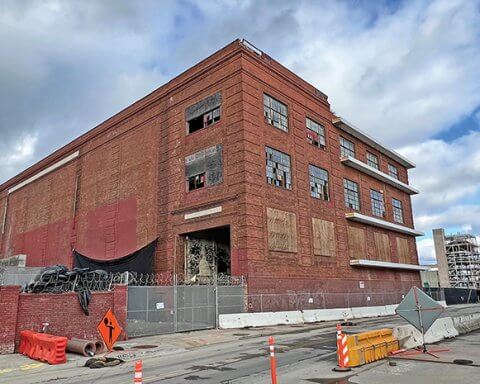
Last fall schools welcomed back students for in-person learning five days a week, many for the first time in a year and a half. Potrero Hill parents and their students have largely greeted the return to normalcy with relief.
“People are so excited to be back. You feel it from teachers, the principal, parents,” said Tanya Mera, who has a kindergartner and third grader at Daniel Webster Elementary.
Fellow Daniel Webster parent, Jason Barton, agreed. “It’s so great to see kids’ smiles, see them running around.”
Barton has a second grader at the school and coaches soccer and baseball.
With COVID-19 cases remaining low, Mera and Barton feel safe sending their kids back into the classroom. Students eat lunch outside; teachers have been creative about how to use spaces throughout the school, conducting some activities outdoors. Daniel Webster has had a couple of COVID-19 cases so far this school year that’ve required exposed students to quarantine, but no outbreaks.
Jordan Peavey, who has a first grader at Live Oak School, said her child had “less of a transition” than public school students given that classes were held in-person most of last year. There’ve been no COVID-19 cases so far this year at the school. Similar to the San Francisco Unified School District (SFUSD), Live Oak requires masking, open windows, and outdoor lunch.
According to SFUSD’s COVID-19 dashboard, only 321 positive COVID-19 cases have been reported since mid-August, out of nearly 63,000 students and staff; a case rate of .005 percent. Portable air cleaners have been installed at all campuses.
By the end of August, SFUSD had a 96 percent vaccination rate among its employees. There’s currently no requirement for students to be vaccinated, though Governor Gavin Newsom announced in October that a vaccine mandate would be phased in for all students once the Food and Drug Administration approves inoculations for children.
“The decision to come back was safe,” Mera said. “It’s unfortunate we couldn’t have done it sooner.”
A Daniel Webster parent who wished to remain anonymous agreed, saying that the low case rates prove “we could have done something differently last year.”
The District is struggling with low enrollment and teacher shortages. At the beginning of the school year 49,435 students registered at San Francisco public schools, a 6.6 percent decline since fall 2019; a 4.7 drop from last year.
As a result of reduced student population, SFUSD could lose $35 million in state funds next fiscal year, equivalent to a 6.5 percent drop from two years ago. The District expects its base grant from the state, determined by daily attendance numbers, to fall to roughly $500 million compared to $535 million before the pandemic. That could worsen an already sizable deficit for next year. In its last detailed update issued in June, SFUSD’s budget office pegged its 2023 fiscal year deficit at $112 million, a calculation that excluded further enrollment declines. In September, the state estimated the shortfall at $116 million after removing certain unspecified budget reductions.
Student loss at San Francisco public schools matches statewide trends over the past two years, during which many families relocated, changed schools, or pulled kids from school entirely. The Los Angeles Unified School District experienced a six percent enrollment decline.
In San Francisco, the most pronounced enrollment declines occurred among younger students, with a 13 percent drop in kindergarteners between fall 2019 and fall 2021. White, Asian and Filipino families left SFUSD schools in the greatest numbers.
Despite a general enthusiasm to be back on campus, some students have anxiety about the pandemic and social discomfort after more than a year away from school. SFUSD has developed a mindfulness program that includes daily mood checks, brain breaks, and emotion vocabulary building exercises, according to SFUSD Public Relations Manager Laura Dudnick.
“Knowing they’ve been out of school, we want them to have that opportunity,” said Superintendent Vincent Matthews during a visit to Daniel Webster for a session on mindfulness.
Parents are also confronting continued challenges; the ongoing public health crises makes building a sense of community difficult.
“We’re not fully back to normal, though everyone wants it to be,” Peavey acknowledged.
Gone are opportunities for large fundraising events. Parents can no longer enter classrooms due to pandemic restrictions. Barton misses pasta dinners during which families would pack into a room.
Donations are down at Daniel Webster, according to Mera. The Parent-Teacher Association is developing new fundraising initiatives to close the gap. She acknowledged the need to start “from square one” to build enthusiasm for such events such as Taste of Potrero, typically held in May.
Live Oak couldn’t have its schoolwide camping trip at the end of last year but is hoping to have more in-person events this year, according to Peavey. There’s a strong desire to foster community spirit and shift from screens after a year of parent events on Zoom.
SFUSD parents are also adjusting to schedule changes. Daniel Webster moved from an 8:40 a.m. to 7:50 a.m. start time in an effort to cut bus transportation costs. The transition has been difficult for many families, according to Mera. Barton said the time shift has been “a little rough” and he wasn’t sure if “teeth are getting brushed as well as they used to.”
Downtown High School and Bessie Carmichael School also have new schedules this year, both moving to a 9:30 a.m. start time. Bryant Elementary continues to begin at 7:50 a.m.



